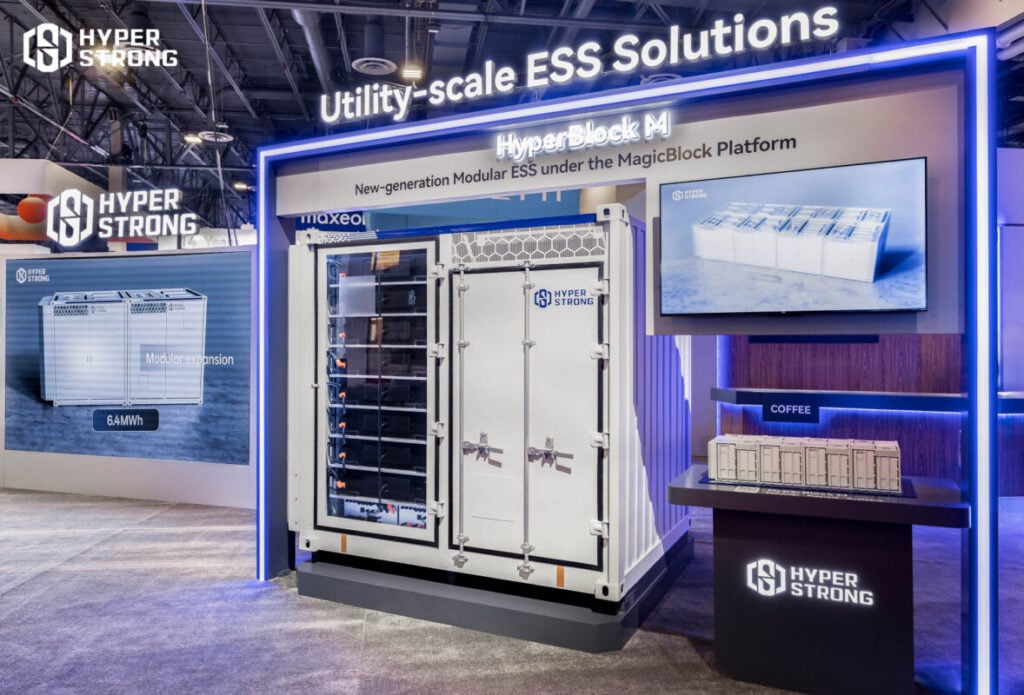
In a battery energy storage system (BESS) market where success hinges on rapid, high-performance, and cost-effective deployment, the role of the system integrator has never been more critical.
Dr. Guang Yang, President of Technology at HyperStrong, argues that true competitiveness extends far beyond hardware, lying in the seamless fusion of technology, supply chain, and full-lifecycle service.
This philosophy is now being validated globally, as HyperStrong rapidly executes international projects and deepens its local presence across the Americas, EMEA, and APAC.
The Integration Imperative: Delivering Flexibility without Compromise
For global energy storage developers, a central challenge persists: how to incorporate preferred or locally mandated components without sacrificing project timelines, performance, or financial viability.
Enjoy 12 months of exclusive analysis
- Regular insight and analysis of the industry’s biggest developments
- In-depth interviews with the industry’s leading figures
- Annual digital subscription to the PV Tech Power journal
- Discounts on Solar Media’s portfolio of events, in-person and virtual
HyperStrong, China’s top-ranked energy storage system integrator for four consecutive years and a global leader by deployed capacity, has built its strategy around this very challenge. The company’s core advantage lies in its “rapid integration” capability, which is being actively demonstrated in its growing international portfolio. The company has secured a batch of significant overseas orders and successfully commissioned multiple projects across North and South America, Europe, Asia and Africa, adapting its systems to meet regional standards and client preferences.
“We maintain an open architecture,” explains Dr. Yang. “We seamlessly partner with leading power conversion system (PCS) vendors like SMA and Power Electronics, as well as energy management system (EMS) specialists—essentially, any system our end-customers prefer. This flexibility is key to our global delivery model.”
This flexibility is crucial in complex, multi-vendor environments. HyperStrong’s engineering teams have developed standardised protocols to integrate third-party balance of plant (BOP) equipment efficiently, reducing technical risk and ensuring projects are delivered on time and to exacting quality standards.
While traditional integrators often struggle with customisation requests that inflate costs and schedules, HyperStrong turns this integration challenge into a reliable, repeatable advantage.
Engineering for Uptime: How AI and Predictive Analytics Guarantee Availability
In competitive markets like ERCOT in Texas, where project economics depend on capturing fleeting price spreads, system availability exceeding 99% is non-negotiable. Even minor downtime can equate to millions in lost revenue.
Meeting this demand requires a shift from reactive maintenance to predictive prevention. “Our strategy focuses on intervention as early as possible,” Dr. Yang states.
HyperStrong’s solution integrates multi-layered sensor data—tracking gas, temperature, and local climate conditions—into its AI-driven platform.
This system performs advanced analytics, enabling early fault detection and allowing O&M teams to address potential issues before they result in downtime. The proactive approach to system design and management ensures that HyperStrong’s projects are not just built to last, but built to earn.
HyperBlock M: Modular Design Unlocks Global Deployment Flexibility
While the industry races to pack more capacity into standard 20-foot containers, HyperStrong took a contrarian and strategic approach with its HyperBlock M unveiled around April this year.
The innovation of the 10-foot HyperBlock M isn’t merely its compact size or its 3.2MWh capacity. The ‘M’ in Hyperblock M stands for ‘magic,’ referring to the magic of a modular philosophy that prioritises real-world deployment flexibility over sheer unit-level density.
Projects can combine multiple blocks (1, 2, 4, or 8) in side-by-side or back-to-back configurations, allowing developers to optimise for irregular site layouts. This modularity is proving invaluable for international logistics and installation, particularly in regions with complex site constraints or limited infrastructure.
Crucially, by housing AC components externally, HyperBlock M enables tighter and more efficient system-level integration when multiple units are combined. This design, alongside options for string converters, exemplifies HyperStrong’s commitment to solving practical deployment challenges, simplifying transportation, accelerating setup, and ultimately providing customers with unparalleled configuration flexibility.

Building a Local Foundation for Global Success
HyperStrong’s ability to deliver “high-performance, low-cost” solutions is rooted in sophisticated supply chain management and scalable manufacturing. To support its expanding international pipeline, the company has moved beyond mere export, establishing dedicated local teams not only in North and South America, but also in key EMEA and APAC markets.
These teams provide crucial on-the-ground support for sales, project management, and technical service, ensuring closer collaboration with local partners and faster response times across continents.
The company secures its cell supply through strategic, long-term partnerships with top-tier vendors, insulating itself from market shortages. This is supported by a vast domestic manufacturing network with an annual production capacity of approximately 40GWh, featuring dedicated production lines for international markets in Zhuhai, Guangdong province.
Furthermore, quality is engineered into every system from the ground up. A dedicated Supplier Quality Engineering (SQE) team enforces strict enterprise standards, testing all incoming components at its Beijing facility. This “quality gate” approach prevents failures at the source, complementing the predictive monitoring of deployed systems from Texas to Zimbabwe, from Lithuania to Australia.
Conclusion
Founded in 2011 by a team of US-educated PhDs, HyperStrong combines deep technical expertise with a global outlook. By mastering the entire value chain, from cell procurement and modular product design to AI-driven lifecycle management and flexible integration, HyperStrong is now accelerating its global delivery of reliable, bankable, and high-performing assets.
The successful execution of overseas projects across the Americas, EMEA, and APAC, a growing order book, and the strategic establishment of local teams in all key international markets mark a new phase of expansion, solidifying its position as a world-class system integrator for the global BESS market.
Learn more at: www.hyperstrong.com
